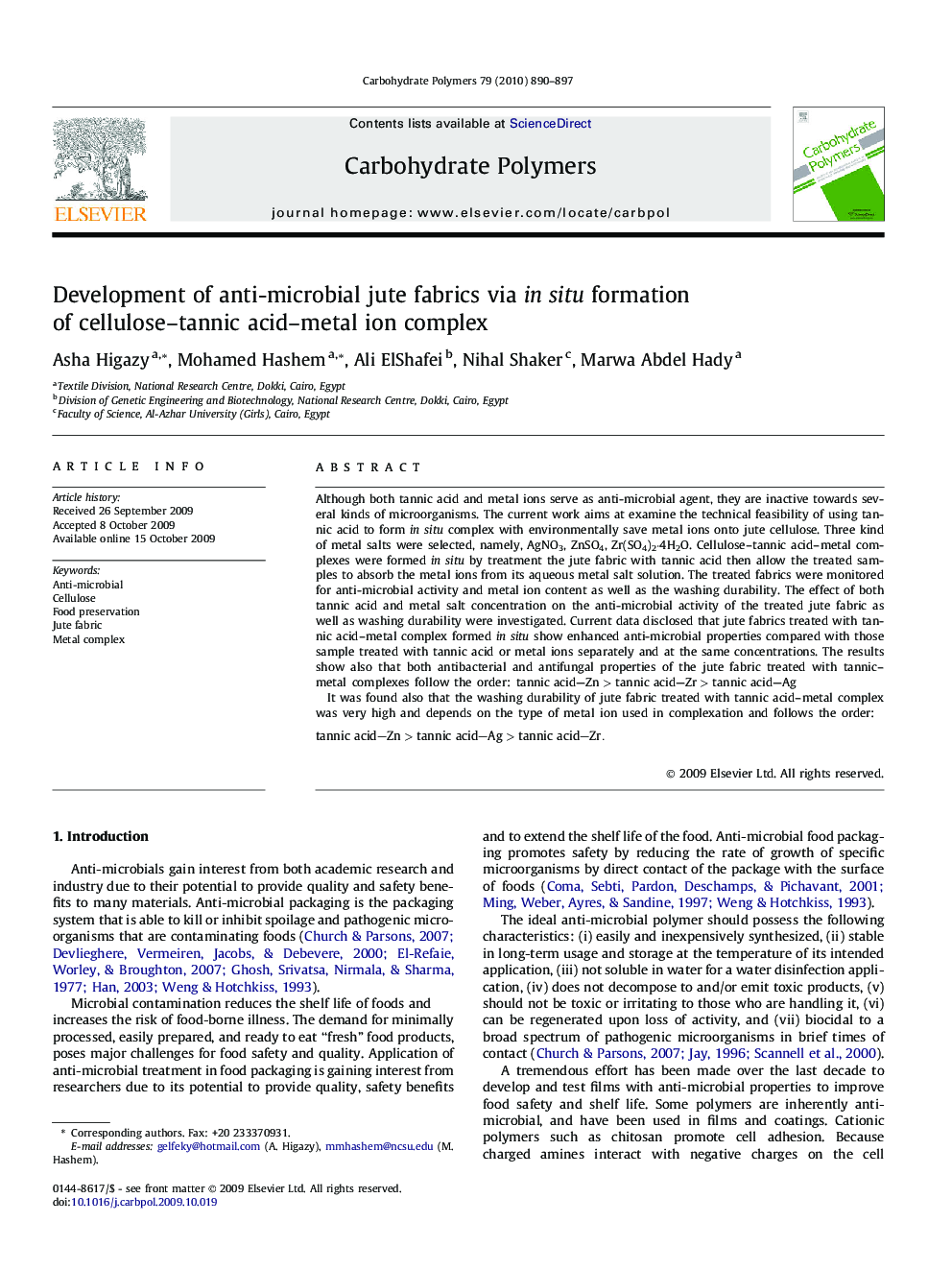| Article ID | Journal | Published Year | Pages | File Type |
|---|---|---|---|---|
| 1387282 | Carbohydrate Polymers | 2010 | 8 Pages |
Although both tannic acid and metal ions serve as anti-microbial agent, they are inactive towards several kinds of microorganisms. The current work aims at examine the technical feasibility of using tannic acid to form in situ complex with environmentally save metal ions onto jute cellulose. Three kind of metal salts were selected, namely, AgNO3, ZnSO4, Zr(SO4)2·4H2O. Cellulose–tannic acid–metal complexes were formed in situ by treatment the jute fabric with tannic acid then allow the treated samples to absorb the metal ions from its aqueous metal salt solution. The treated fabrics were monitored for anti-microbial activity and metal ion content as well as the washing durability. The effect of both tannic acid and metal salt concentration on the anti-microbial activity of the treated jute fabric as well as washing durability were investigated. Current data disclosed that jute fabrics treated with tannic acid–metal complex formed in situ show enhanced anti-microbial properties compared with those sample treated with tannic acid or metal ions separately and at the same concentrations. The results show also that both antibacterial and antifungal properties of the jute fabric treated with tannic–metal complexes follow the order: tannic acid–Zn>tannic acid–Zr>tannic acid–Agtannic acid–Zn>tannic acid–Zr>tannic acid–Ag.It was found also that the washing durability of jute fabric treated with tannic acid–metal complex was very high and depends on the type of metal ion used in complexation and follows the order:tannic acid–Zn>tannic acid–Ag>tannic acid–Zr.tannic acid–Zn>tannic acid–Ag>tannic acid–Zr.
